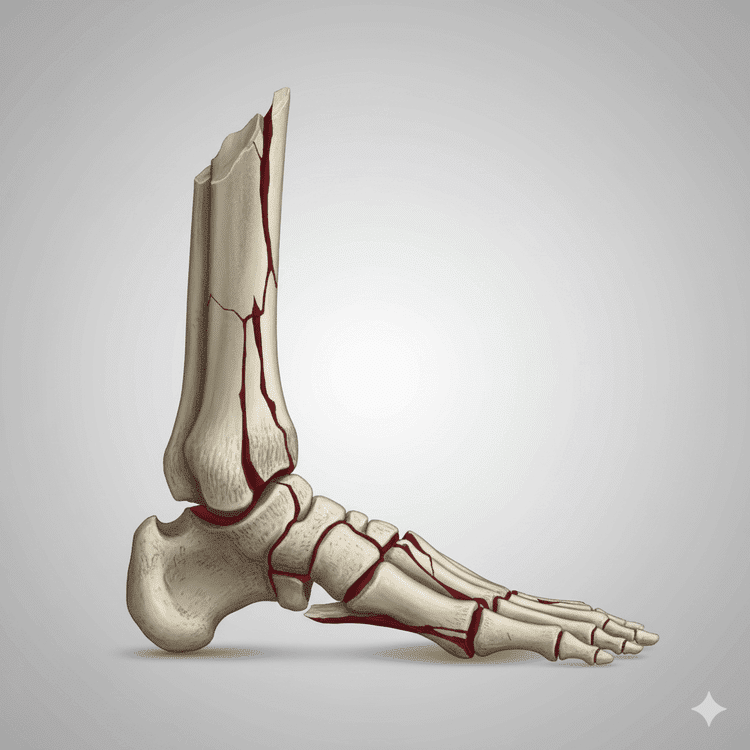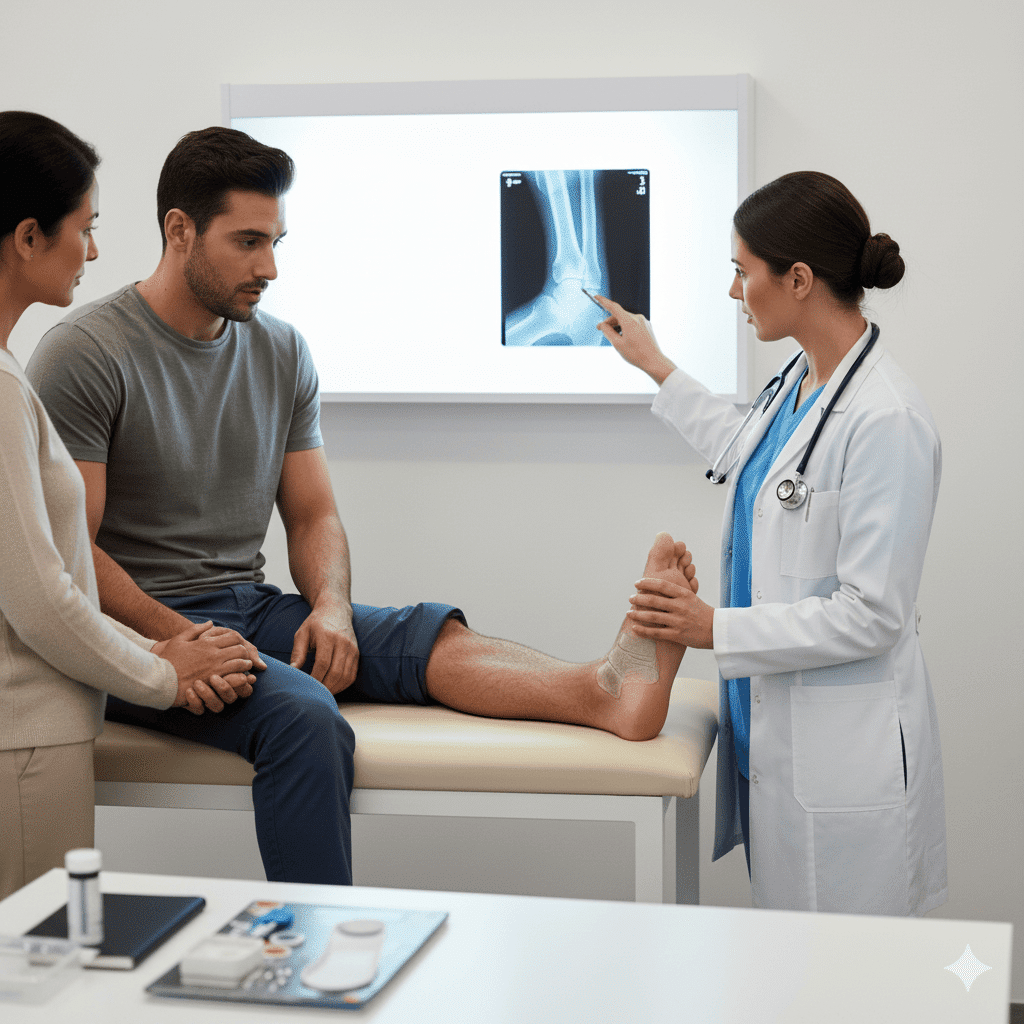What is Fracture Repair and Stabilization?
Expert Care for Broken Bones in the Foot and Ankle
Fracture repair and stabilization is the medical process of treating a broken bone. The primary goal is to ensure the bone heals in its correct anatomical position to restore function, prevent long-term pain, and minimize the risk of future complications like arthritis. Given the intricate structure of the 26 bones in the foot and ankle, treating fractures in this area requires a high level of specialized skill.
At City Orthopaedics & Sports Medicine, our team of foot and ankle surgeons including Dr. Jason Hymowitz has extensive training in both non-surgical and surgical techniques to repair fractures of the foot and ankle, from simple toe fractures to complex ankle breaks.
Types of Fractures in the Foot and Ankle
A fracture can range from a tiny crack to a complete break. Our team is equipped to treat all types, including:
- Stable Fractures: The bone is broken, but the ends are still aligned properly.
- Stress Fractures: Hairline cracks in the bone, often caused by repetitive stress or overuse.
- Displaced Fractures: The broken ends of the bone are separated and no longer in their correct alignment.
- Comminuted Fractures: The bone is shattered into three or more pieces.
- Avulsion Fractures: A tendon or ligament pulls a small piece of bone away from the main bone.

When is Fracture Treatment Necessary?
Any suspected fracture requires immediate medical evaluation. Proper diagnosis and treatment are essential to:
- Ensure the bone heals in the correct position.
- Prevent improper healing (malunion) or failure to heal (nonunion).
- Reduce the risk of developing post-traumatic arthritis.
- Avoid chronic pain, deformity, and loss of function.
Non-Surgical Fracture Treatment: Immobilization
For many stable fractures where the bone is already in a good position, surgery is not necessary. The primary treatment is immobilization, which allows the bone to heal naturally. This is achieved through:
- Casting or Splinting: A hard cast or a supportive splint is applied to hold the foot and ankle still, protecting the broken bone as it mends.
- Walking Boots (CAM Walker): A removable boot can be used to provide stability and protection while allowing for cleaning and, in some cases, limited weight-bearing.
- Non-Weight-Bearing: You will likely be instructed to use crutches to keep all weight off the injured foot for a specific period, which is critical for proper healing.
Surgical Fracture Repair (Open Reduction and Internal Fixation – ORIF)
Surgery is required for more severe fractures to ensure a stable and properly aligned outcome. It is typically recommended for:
- Displaced fractures where the bones are significantly out of alignment.
- Unstable fractures that are likely to shift out of place.
- Fractures that involve a joint surface.
- Multiple fractures or severe injuries.
The most common surgical procedure is called Open Reduction and Internal Fixation (ORIF).
1. Open Reduction: The surgeon makes an incision to directly access the broken bone. The bone fragments are then carefully repositioned into their normal anatomical alignment.
2. Internal Fixation: Once aligned, the bones are held together with specialized surgical hardware. This internal hardware, which may include medical-grade screws, plates, wires, or pins, acts as an internal splint to keep the bone stable while it heals.

What to Expect During Recovery
Recovery from a fracture is a gradual process that requires patience and adherence to your surgeon’s instructions.
- Immobilization: A period in a cast or boot is necessary, even after surgery, to protect the healing bone.
- Pain Management: Your doctor will provide a plan to manage post-procedural pain.
- Weight-Bearing: You will be given a specific timeline for when you can begin to put weight on your foot. This is a gradual process, starting with partial weight and progressing to full weight-bearing.
- Physical Therapy: This is a crucial final step. A physical therapist will guide you through exercises to restore your range of motion, strength, and balance, ensuring you make a full and safe return to your activities.Read our Article on The Importance of Physical Therapy: A Path to Recovery and Wellness.
Time to Heal Correctly
If you have suffered a foot or ankle injury, getting the right care quickly is essential. Our specialists are here to provide an accurate diagnosis and a clear treatment plan to ensure you heal properly and get back on your feet.
When faced with pain, injury, or discomfort in your foot or ankle, seeking a timely and precise diagnosis is essential. Dr. Jason Hymowitz, a distinguished board-certified foot and ankle surgeon, offers the expertise and compassionate care you need to move forward with confidence. Renowned for his skill in sports medicine, musculoskeletal deformities, and post-traumatic and cosmetic surgical reconstruction, Dr. Hymowitz blends advanced technology with evidence-based treatment to deliver exceptional outcomes. Whether through conservative care, minimally invasive techniques, or complex reconstructive surgery, he is dedicated to restoring your mobility, relieving your pain, and helping you return to the activities you love. Your path to lasting relief and improved quality of life begins with Dr. Hymowitz — a trusted expert committed to your well-being.


